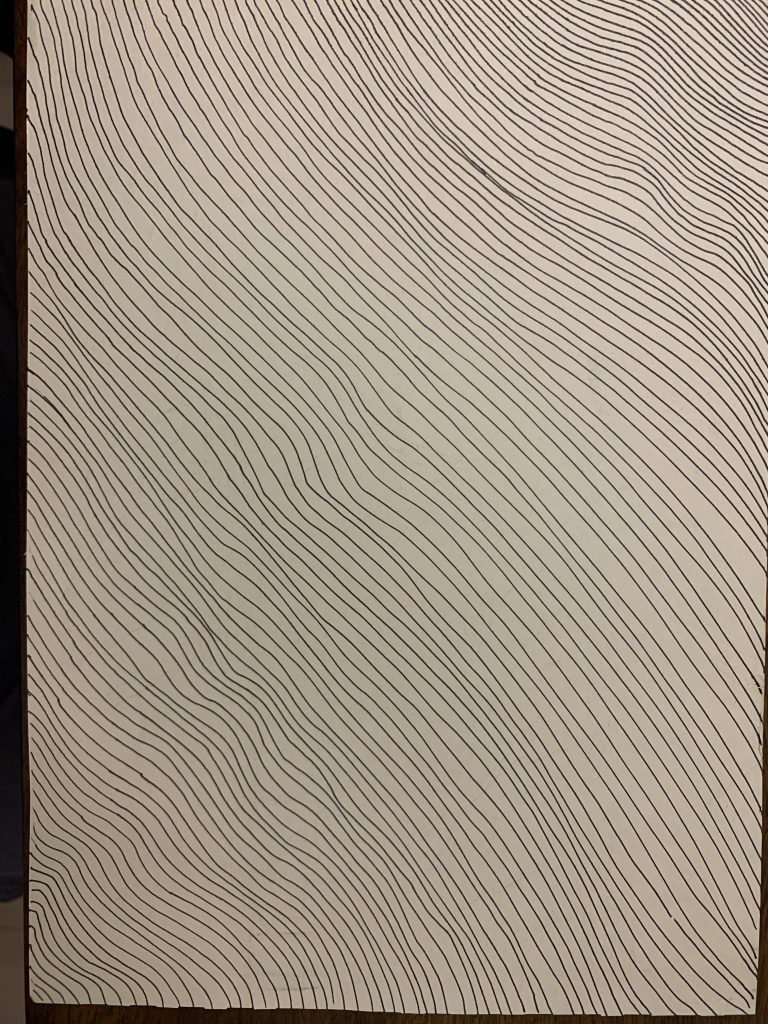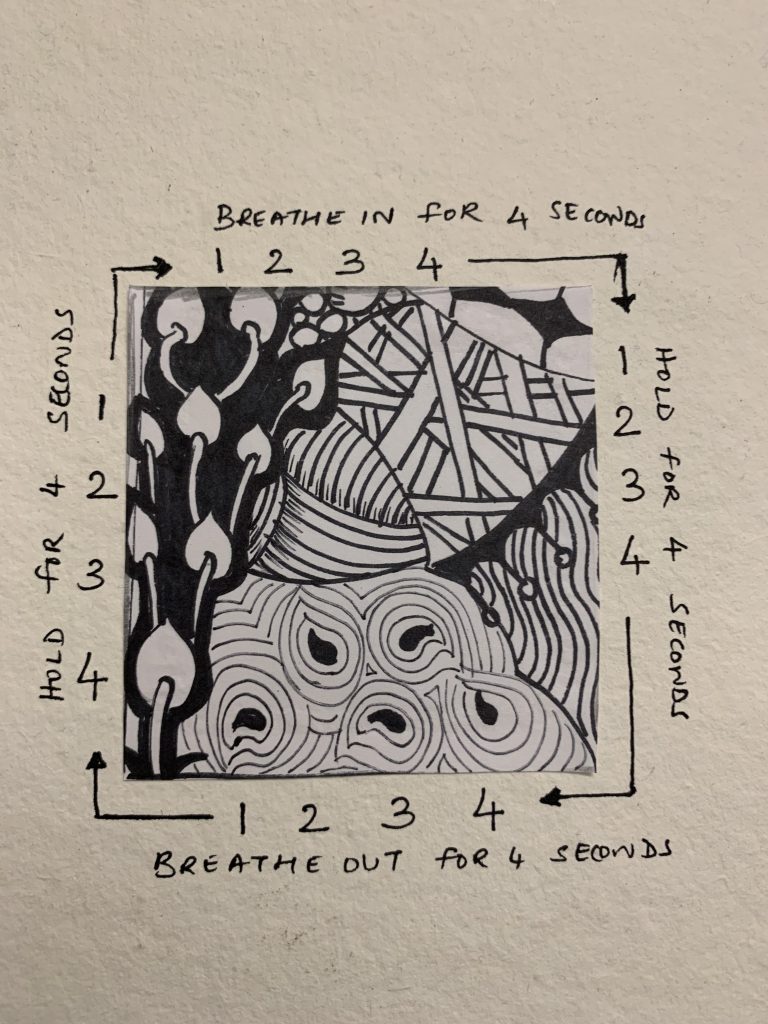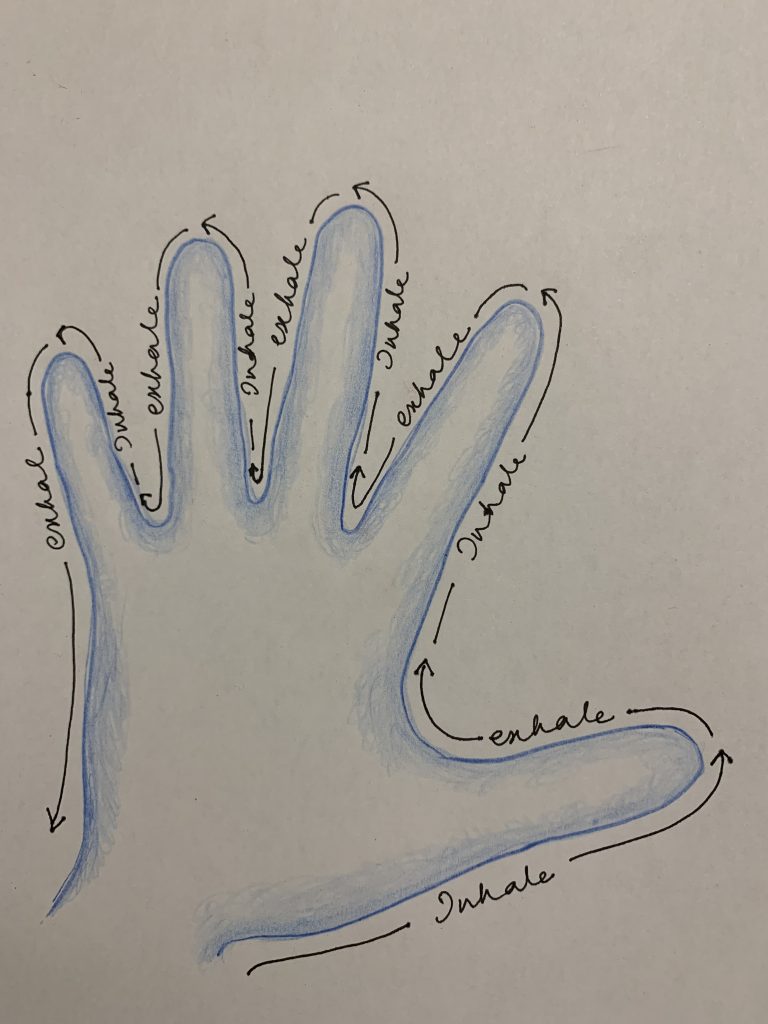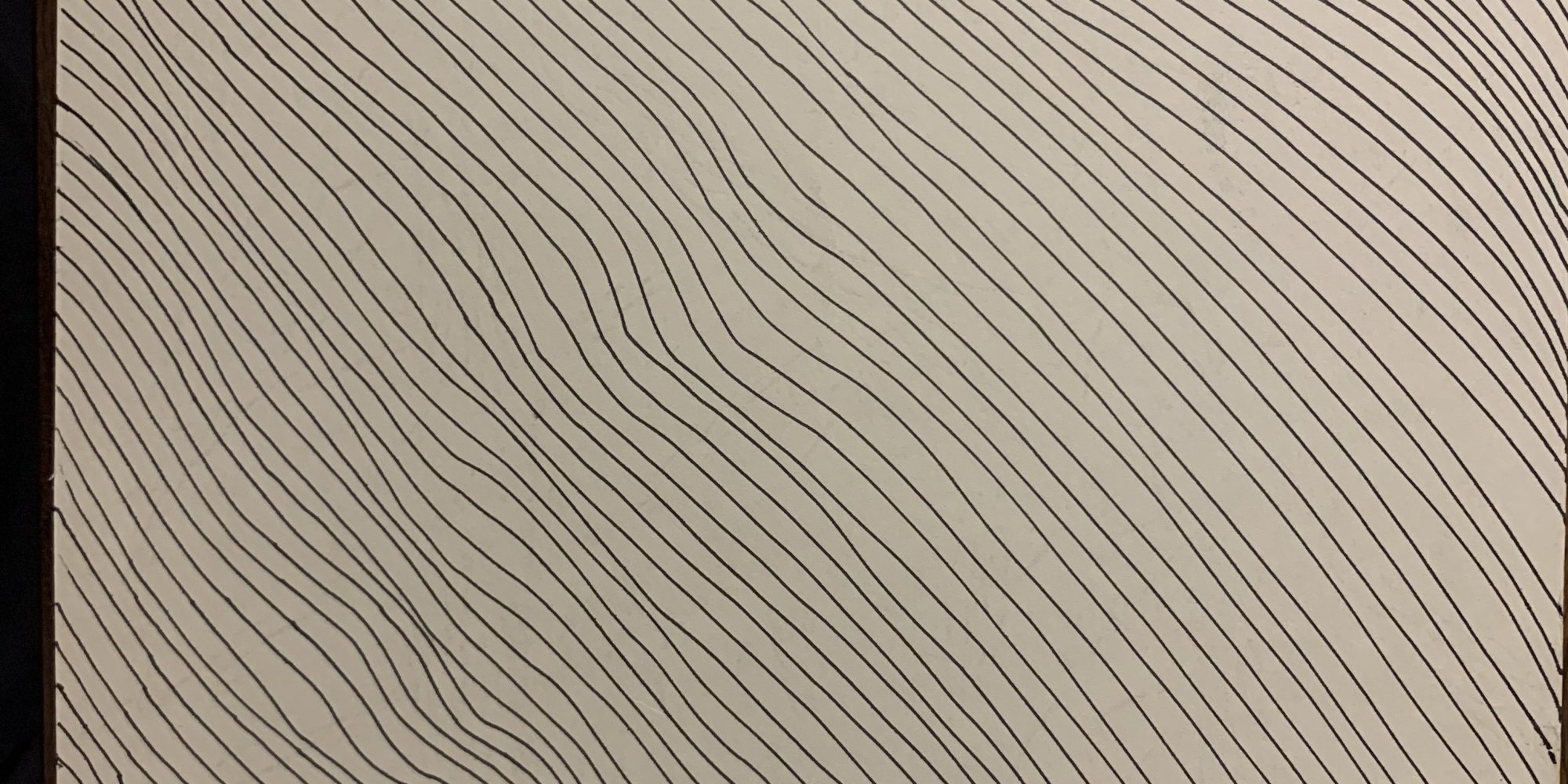“If we live as we breathe, take in and let go, we cannot go wrong.”
– Clarissa Pinkola Estes
I recently had one of those days. All day I felt on edge, listless, and frustrated. I wanted to relax and yet I wanted to be productive. I tried, but I just could not center myself emotionally.
Not knowing what else to do, I took out a drawing pad and pen. With pen and paper in hand, I began making long rows of flowing lines. I slowly found my drawing rhythm. After a few minutes I realized that each line was the length of my exhalation. Without meaning to, my system was seeking self-regulation through art and breath-work. Here is what was happening: I would inhale deeply while lifting the pen off the paper. Then I slowly exhaled through my mouth – while drawing a single line from the top of the page to the bottom. I repeated this visual meditation for the entire paper. In breath, lift pen. Out breath, draw a line. I noticed how my body craved the longer lines of the out breath.

As my entire nervous system began to settle, I recalled a Chinese brush painting session with my Art as therapy course. Each Chinese character stroke corresponded to an in breath or an out breath. the practice was all about visual breathing meditations.
I have now begun to think about breath as energy. The in breath and out breath each possess unique energetic qualities and are tied to the cycles found in nature. After all breathing has become a particular focus these days. Wearing a mask when outside has brought more attention to my own breathing. I can feel the sensation and temperature of my breath as I exhale, and the fabric of the mask touching my mouth as I inhale.
Rather than devoting space to a long list of techniques here, I would like to focus on just 3 simple exercises that I have personally found helpful. I will take them each a step further by suggesting ways to pair them with art.
The Long Exhale
This is probably the fastest and most simple breathing method I have found for quickly shifting from the sympathetic nervous system (an activated nervous system) to the parasympathetic nervous system (for resting, digesting, and relaxation). Quite simply, just make your exhale longer than your inhale. First, breathe in through your nose if possible. Then form a small “O” with your mouth as if you are blowing through a straw. Then breathe out. This often makes a soft whooshing sound. This is an excellent method if you are in the middle of a panic attack or just want to relax your nervous system. After a minute or two of breathing like this, your heart rate should lower and hopefully you will feel a sense of relief beginning to emerge.
As illustrated in my example above, make your exhalation visual by making a mark that corresponds to the length of your exhalation. I used a pen, but you can use any art material you have on hand. Some ideas are colored pencils, markers, watercolor brush pens, liquid ink, or oil and chalk pastel. You can also play around with paper size. If you are struggling to slow down your exhalation, begin on a half-page. As your out breath lengthens, you can move to a large piece of paper. I drew wavy lines, but you can make any type of mark that feels soothing.
Square breathing

Square breathing is another simple and effective strategy. Draw a square as you inhale and exhale. First slowly exhale as much air as you can. Next gently inhale through the nose for a count of 4 as you draw your first side of the square. Hold at the top of the breath for a count of 4 drawing the next side. Gently exhale through the mouth to the count of 4 as you draw the third side. At the bottom of the breath pause and hold the breath to the count of 4 and complete your square. Repeat these steps as many times as feels good. Have fun with the squares if you like and fill them in with designs and doodles after your breathing exercise. Continue to be mindful of your breathing as you draw.
Take 5
One of my young students taught me this one! And he loves to remind me to use it during tough (emotionally charged) moments. What is wonderful is that it’s simple enough for a child to remember the technique.

This is such a natural breathing exercise to adapt to art. Place your hand on a piece of paper and repeat the steps, using a drawing material (such as a pen, colored pencil, or crayon) to trace each inhale and exhale as you breathe around each finger. Repeat the process as many times as you like until you feel calmer and more centered.
Try this with children too! Let them trace your hand as you breathe in and out, or offer to trace their hands as they do the same. You can expand this exercise to fill an entire page with overlapping hands, which can then be colored or painted in.
This is just some of the ways we can work with our breathing and art making. I hope that these ideas bring comfort and relief to you as you explore them. I would love to hear from you in the comments!

